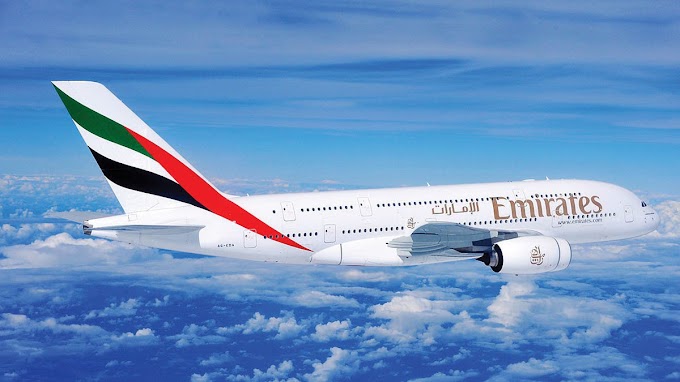is a name that echoes through the corridors of African history. But, did you know the untold side of his story? Today, we unravel the mystery behind Shaka's rule and explore the questions that history often leaves unanswered."
You may have heard about this man if you are a fan of African historical stories and tales or History in general. You may have also heard about his military genius, but did you know the other side of his story? Let me go straight into why you are here. The Zulus were one of the most formidable warrior peoples in Africa. Their history is very fascinating. Originally a simple small tribe, they built the most powerful kingdom in southern Africa with Shaka Zulu’s father, Senzangakhona as their Leader and king. With about 500 warriors they were still indomitable clans or kingdoms.
As so often in history, it only takes one person to change the course of events. And this is precisely the case with the Zulu kingdom. Shaka Zulu emerged from the very fabric of the Zulu clan, contributing significantly to the formation of the kingdom. However, his reign was characterized by a brutal style of ruling and an imposing demeanor that prompted questions about whether he was genuinely embraced and loved by his Zulu people and subjects during his time. Despite his undeniable influence in shaping the Zulu Kingdom, his harsh governance and formidable presence linger as intriguing aspects of Shaka's complex legacy.
As we delve into Shaka Zulu's life, a plethora of unanswered questions loom large around his enigmatic persona and stringent ruling style. Was his greatness as grand as historical accounts suggest? Did his subjects truly resonate with his governance style? What led to his untimely and tragic end? How angry can he be and how does he react when it happens? This and many more we will unveil in this video on the layers of mystery surrounding Shaka's life, shedding light on aspects often left unexplored. Stay tuned until the end, as we're sure you'll find some surprising revelations today.
Shaka Zulu, the African Napoleon, the great warrior, the master tactician, the one and only INKOZI, is a name that has left an indelible mark on African history. Till now, there is no one like him.
Shaka Zulu, the legendary South African king, had distinctive physical attributes that contributed to his prowess as a warrior and leader. Shaka was often portrayed as having a robust and muscular build and being quick-tempered. He was known for his physical strength and endurance, attributes that were highly valued in the context of Zulu warfare. His stature was generally described as imposing, befitting a warrior and leader. Shaka was known for his distinctive hairstyle, featuring a shaved head with a central ridge of hair running from the forehead to the nape of the neck. This hairstyle, often referred to as the "isicoco" or head-ring, was a symbol of his royal status. Shaka bore physical scars on his body, a testament to his experience as a warrior on the battlefield. These scars were likely earned in combat, reflecting the intense and brutal nature of the warfare in which he engaged. As a king, Shaka adorned himself with traditional Zulu regalia, which often included animal hides, beadwork, and other symbolic elements. He possessed distinct facial characteristics that were typical of the Zulu people. Facial scarification and other markings were not uncommon among African tribes, but detailed descriptions of Shaka's facial features are limited but could have been. Beyond his physical appearance, Shaka's physical attributes were also demonstrated through his agility and combat skills. Shaka is best known for uniting many warring tribes to establish the Zulu Empire in the early 1800s. His life has been immortalized many times in both TV shows and movies portrayed as a driven leader who attempted to band South African tribes together to fight against the Europeans bent on conquering their lands. But in reality, the systemic colonization of South Africa only began 20+ years after his death, and his kingdom sadly only lasted about 50 years. Born in 1787 in KwaZulu-Natal, South Africa, Shaka's father, Senzangakhona, was the chief of the Zulus, while his devoted mother Nandi was from another clan. They were not considered married in their tribal customs at the time Shaka Zulu was born. Therefore, they were cast out of the clan after she gave birth due to some reasons. Why? His mother, Nandi, was from the Langeni tribe and she got pregnant with his cousin, the king and Leader, Senzangakhona. The two engaged in uku-hlobonga, a form of sexual foreplay without penetrative sex that was allowed for unmarried couples. This was meant to release sexual tension between young people and prevent pregnancies from happening. In the case of Senzangakhona and Nandi, however, the rules were broken. When Nandi’s pregnancy was discovered, a formal indictment was sent to Senzangakhona, the chief. However, He dismissed the news and said that Nandi’s menstrual irregularity was caused by an intestinal parasite known as the iShaka. Nevertheless, Nandi gave birth several months later, and Senzangakhona was advised by his elders to collect Nandi and her son. The child was called Shaka, a corruption of the parasite’s name. Shaka was therefore considered as the fruit of an illegitimate and incestuous relationship. His father Senzangakhona therefore denied him. Suffering from bullying after bullying, he fled with his mother Nandi to the Mthethwa tribe whose chief Dingiswayo ended up marrying his mother. As a child, Shaka herded sheep for his father. When the young Shaka allowed a dog to kill one of the sheep, his father was furious. Nandi, however, defended her son. As a result, both mother and son were banished from the kraal (a traditional African village of huts). They sought refuge with the Mthethwa clan, which was led by a powerful chief, King Dingiswayo. He already had a federation of 50 tribes through diplomacy and warfare. It was under this king that Shaka’s fortunes began to take a turn for the better. At the age of 16, Shaka became the king’s senior herd boy due to his intelligence, courage, and resolution. According to one story, Shaka once stood his ground against a leopard attacking the herd. He single-handedly killed the beast, thus earning the praise and a cow from Dingiswayo.
The fierce competition between the cattle herders of the region for the scarce grazing ground meant that conflict was almost inevitable. Dingiswayo prepared for this by organizing his youths into regiments based on their age groups. Shaka was soon recruited as a warrior, and his regiment was known as the Izi-cwe (‘Bushmen’). Shaka was equipped with the standard weapons of that region – an oval shield and three assegais (light spears for throwing). He wore a kilt of fur stripes, a skin cape with black widow-bird plumes, cowhide sandals, and white oxtails at the wrist and ankles.
As a teenager, Shaka was drafted into his father-in-law's army, where he stood out for his strength and courage. While fighting for the Mthethwa Empire, Shaka developed advanced fighting methods, including designing better spears, organizing army ranks based on age, and introducing the bullhorn battle formation.
Senzangakona died in 1816, and Dingiswayo released Shaka from service and sent him to take over the Zulu, which at this time probably numbered fewer than 1,500, occupying an area on the White Umfolozi River. They were among the smallest of the more than 800 Eastern Nguni–Bantu clans, but from the day of Shaka’s arrival, they commenced their march to greatness. Once he became king, one of his first actions was to slaughter all those who had bullied him during his childhood. Shaka ruled with an iron hand from the outset, meting out instant death for the slightest opposition also.
As we journey through the life of Shaka Zulu, let's transition from his tumultuous childhood to the battlefield where his strategic brilliance reshaped the Zulu kingdom.
Battles between the tribes of the region at that time usually began with two bodies of warriors facing each other at a distance of between 35 to 45 meters (115 to 148 feet.) Then, each side would cast their light spears at the enemy, and return those that were already hurled. The battle was over when one side had enough and fled. If the victors gave chase, the routing warriors could have their lives spared by dropping their weapons, thus signifying their surrender. This form of combat seemed pointless and ineffective to Shaka, as the light spears that were thrown at a distant foe usually did not do much damage.
Shaka decided to change the way battles were fought. Instead of hurling spears from a distance, he decided to close in on the enemy and engage in melee combat. When the opponent threw their spears, he would parry them with his shield. Then, he would charge forward, hook the enemy’s shield aside with his own, and stab the warrior to death with his light spear. To make himself a more effective warrior, Shaka discarded his cowhide sandals, as they hampered his movements.
Additionally, Shaka designed a new type of spear for combat, as the light-throwing spears were rather fragile when used to strike or stab an enemy. This resulted in a spear with a massive blade attached to a stout, short handle. This was called the iklwa, which came out of the sound made when it was thrust and pulled out from a victim’s body. His war tactics were very brutal.
Shaka rearmed his men with long-bladed, short-hafted stabbing assegais, which forced them to fight at close quarters. He then instituted the regimental system based on age groups, quartered at separate kraals (villages) and distinguished by uniform markings on shields and by various combinations of headdresses and ornaments.
He developed standard tactics, which the Zulu used in every battle. The available regiments (known collectively as the impi) were divided into four groups. The strongest, termed the “chest,” closed with the enemy to pin him down while two “horns” raced out to encircle and attack the foe from behind. A reserve, known as the “loins,” was seated nearby, with its back to the battle so as not to become unduly excited, and could be sent to reinforce any part of the ring if the enemy threatened to break out. The battle was supervised by indunas, or officers, who used hand signals to direct the regiments. An impi consistently covered 50 miles (80 km) a day, living off grain and cattle requisitioned from the kraals it passed and accompanied by boys who carried the warriors’ sleeping mats and cooking pots.
Shaka fought for extermination, incorporating the remnants of the clans he smashed into the Zulu. He first decimated the small clans in his vicinity, starting with the Langeni; he sought out the men who had made his boyhood a misery and impaled them on the sharpened stakes of their own kraal fences. In less than a year, the Zulu—and their army—had quadrupled in number.
Before the time of Shaka, the Zulus were a small tribe, consisting of about 1,500 people in a small territory of 26 square kilometers. By 1828, Shaka ruled 250,000 people and commanded an army of 40,000 warriors. He was responsible for the deaths of as many as 2 million people during his reign.
He taught his fighters to take no prisoners and instead kill every enemy to the last man. He was equally ruthless with his own tribe; every Zulu male was expected to be a warrior, and if a man failed to meet Shaka’s exacting physical requirements, he was killed.
Some historians have described the Zulus as “the Spartans of Africa.” It is said that Shaka forced his warriors to discard their sandals and harden their feet so they could run barefoot — faster and more agile. In 1817 Dingiswayo—still Shaka’s overlord—was murdered, and the last restraint on Zulu expansion was removed.
Within two years Shaka bested the only clans large enough to threaten him, the Ndwandwe and the Qwabe, and in a series of annual campaigns he then struck at and smashed the complex network of clans living to the south of the Zulu territories. By 1823 the region was a depopulated ruin of smoking kraals, and the terrified survivors had broken up tribal patterns as far away as the Cape Colony.
By the time the first white traders arrived at Port Natal in 1824, Shaka was in control of a centralized monarchy, which spanned the entire eastern coastal belt from the Pongola River in the north to the lands beyond the Tugela in the south. That year, Henry Francis Fynn and Francis Farewell visited Shaka. In 1825, when Lieutenant James King paid him a visit, Shaka sent a goodwill delegation to Major J Cloete, the Cape government representative at Port Elizabeth. Shaka accorded the white traders the most favored treatment, ceded them land, and permitted them to build a settlement at Port Natal. He was curious about their technological developments, was anxious to learn much more about warfare, and was especially interested in the culture they represented. Moreover, he was alert to the advantages that their trade might bring to him.
In 1826, in order to be closer and more accessible to the settlers at Port Natal, Shaka built a large military barracks at Dukuza, THAT IS …the place where one gets lost. It was 80 km further south of his previous royal residence kwaBulawayo, on the site of the present-day town of Stanger. During his lifetime, there were no conflicts between the whites and the Zulus, as Shaka did not want to precipitate clashes with the military forces of the Cape colonial government. H F Fynn, who knew him well, found him intelligent and often amiable and mentioned occasions that left no doubt that Shaka was capable of generosity. Freed from the restrictions that limited most chiefs, Shaka acted as an undisputed, almighty ruler. A cruel tyrant, he had men executed with a nod of his head. The loyalties of his people were severely strained as the frequent cruelties of their great king increased steadily. The climax came with the death of his mother Nandi in October 1827,
In 1827 Nandi died, and with his mother’s death, Shaka became openly psychotic. About 7,000 Zulus were killed in the initial stage of his grief because they didn't sympathize well with him, and for a year no crops were planted, nor could milk—the basis of the Zulu diet staple—be used. All women found pregnant were slain with their husbands, and had goats and cattle killed too. He said so that even the calves might know what it was to lose a mother.
In early 1828, Shaka sent the impi south on a raid that reached the borders of the Cape Colony. Upon their return, anticipating a customary season's rest, Shaka redirected them to raid far in the north. This proved to be the breaking point for his associates. In September of that year, two of his half-brothers, Dingane and Mhlangana, along with an induna named Mbopa, murdered him.
As night fell, Mhlangana and Dingane made their way to Shaka's kraal, ostensibly carrying tribute but, in reality, lying in wait for the opportune moment to strike. According to oral histories, Mbhopa delivered the first blow—a treacherous act that occurred while Shaka was admonishing the men who were ostensibly bringing tribute for their tardiness. Mhlangana and Dingane quickly joined in, sealing Shaka's fate in a continuous stabbing leading to his death.
As the great King Shaka's life ebbed away, he called out to his brother Dingane:
“Hey, brother! You kill me, thinking you will rule, but the swallows will do that.”
He meant the white people because they made their houses of mud, like the swallows. This was too much for his assailants and they leapt upon him, stabbing. According to members of his family, Shaka's last words were:
“Are you stabbing me, kings of the earth? You will come to an end through killing one another.”
Hastily they buried his body in a grain pit nearby. Having died without an heir, Dingane succeeded him, but Shaka's prophecy haunted him and ever after that, he was wary of white people. Under Shaka's successors, Dingane, Mpande, and Cetshwayo the Zulu monarchy profoundly influenced the course of South African history. What aspect of Shaka Zulu's legacy intrigues you the most? Share your thoughts in the comments section below.












